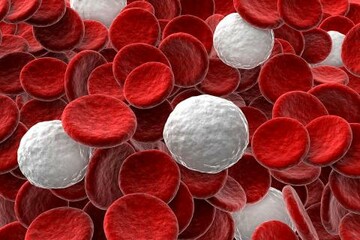Cancer Therapies Get Boost with Innovative Devices
CAMBRIDGE, MA – Over the past decade, new cell therapies have been developed to manage and possibly cure many medical conditions and diseases. Before these treatments can be made more widely available, however, the cell therapy community will have to develop the capability for advanced, large-scale manufacturing of high-quality and consistent living cells.
“Cell therapies are saving the lives of patients, but the current state of biomanufacturing is very complex, expensive and time-consuming, often requiring multiple rooms, highly skilled technicians and many instruments,” said Dorit Berlin, program manager at Draper. “What’s needed is a bioprocessing platform that can help cell therapy developers bring their therapies to market more quickly, safely and affordably.”
In addressing these challenges, Draper is developing and testing new microfluidics platforms that will be capable of producing a wide range of cell therapies. Currently, Draper researchers are developing devices to accelerate manufacture of a cutting-edge cancer-treatment therapy called chimeric antigen receptor (CAR) T-cells, in which T-cells, a type of immune system cells, are genetically modified to recognize and kill cancer cells without damaging healthy cells.
The devices under development at Draper address two key steps of the CAR T-cell therapy manufacturing process: the first uses an innovative acoustics approach to enrich the T-cells in a blood sample, and the second provides a new approach to gene transfer.
To perform the T-cell enrichment, Draper’s device exposes a blood sample to ultrasonic (acoustic) energy as it flows through a microchannel, causing different types of blood cells to separate from each other. Lymphocytes (a class of white blood cell including T-cells) are routed into specific outlet channels, and other cell types travel into a different channel. Using its acoustic separation technique, Draper has been able to enrich the lymphocytes by a factor of 2.5.
Draper previously used acoustics in developing a device to treat certain diseases by separating plasma from other blood components.
Jason Fiering, Distinguished Engineer at Draper, said that others in the biomedical engineering industry have explored acoustic separation of lymphocytes, but their devices were constructed from silicon or glass and have limited potential for scale-up or production, unlike Draper’s disposable cartridges. “In contrast, Draper’s first-ever demonstration of acoustic lymphocyte enrichment in an inexpensive, disposable plastic chip shows the potential for rapid, automated cell separation directly from patient blood,” he said.
Draper’s second achievement in improving the CAR T-cell therapy manufacturing process was to improve the process for transferring genetic material into T-cells. The company’s microfluidics platform aims to reduce the amount of viral vector needed for the gene transfer process and to decrease the amount of time required for the gene transfer process by more than 60 percent—from the current one-to-three days to less than a day.
“Using biomedical engineering to solve challenging problems, such as producing cancer therapies, has long been a mission at Draper. As the cell therapy community moves closer to achieving the goal of a closed, end-to-end system that automates cell therapy bioprocessing—and delivers downstream benefits such as standardizing processes and minimizing human error and the risk of contamination—Draper will continue to deliver solutions that matter,” said Tara S. Clark, vice president, commercial business, Draper.
Released January 17, 2017

